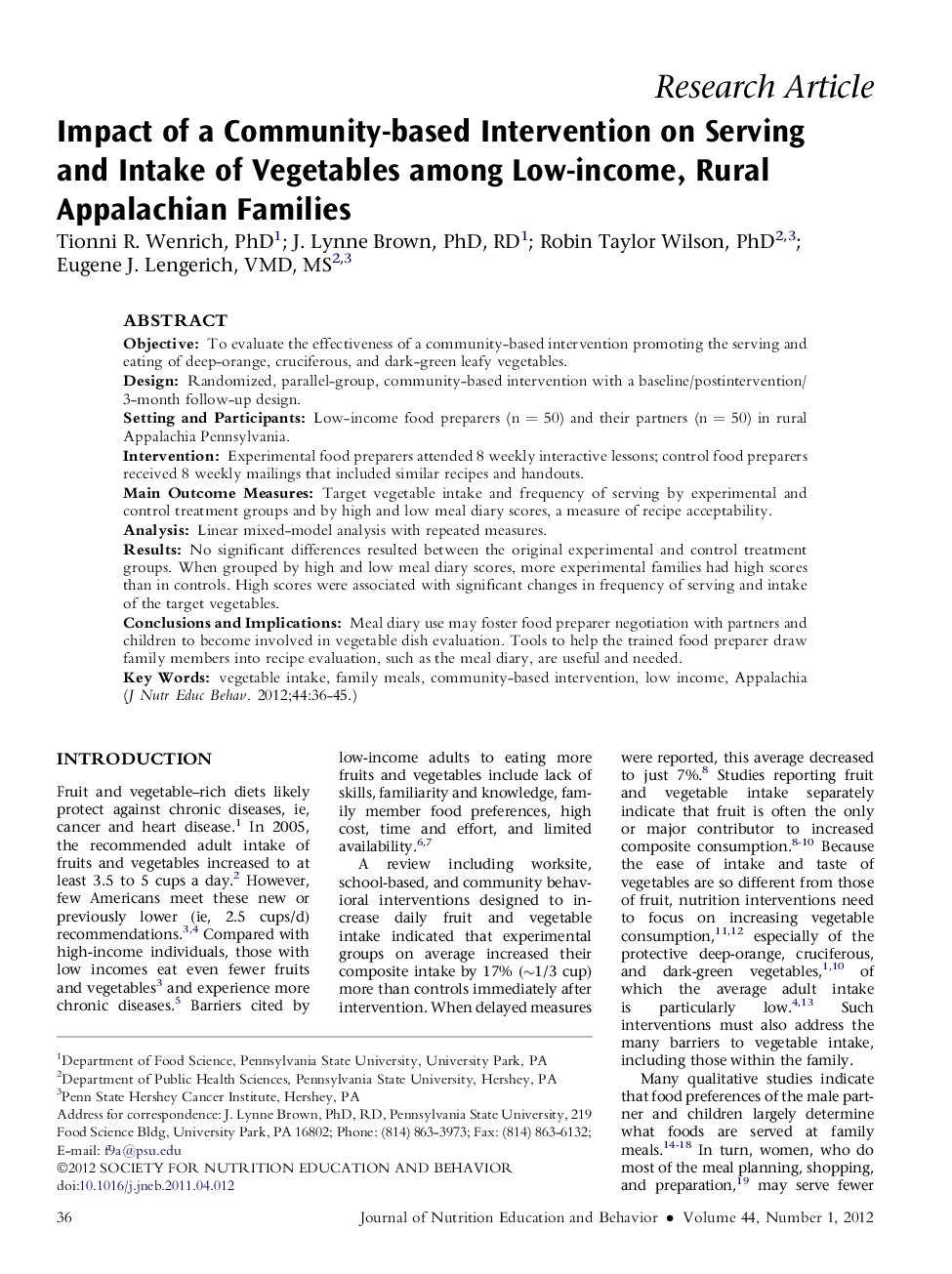| Article ID | Journal | Published Year | Pages | File Type |
|---|---|---|---|---|
| 362424 | Journal of Nutrition Education and Behavior | 2012 | 10 Pages |
ObjectiveTo evaluate the effectiveness of a community-based intervention promoting the serving and eating of deep-orange, cruciferous, and dark-green leafy vegetables.DesignRandomized, parallel-group, community-based intervention with a baseline/postintervention/3-month follow-up design.Setting and ParticipantsLow-income food preparers (n = 50) and their partners (n = 50) in rural Appalachia Pennsylvania.InterventionExperimental food preparers attended 8 weekly interactive lessons; control food preparers received 8 weekly mailings that included similar recipes and handouts.Main Outcome MeasuresTarget vegetable intake and frequency of serving by experimental and control treatment groups and by high and low meal diary scores, a measure of recipe acceptability.AnalysisLinear mixed-model analysis with repeated measures.ResultsNo significant differences resulted between the original experimental and control treatment groups. When grouped by high and low meal diary scores, more experimental families had high scores than in controls. High scores were associated with significant changes in frequency of serving and intake of the target vegetables.Conclusions and ImplicationsMeal diary use may foster food preparer negotiation with partners and children to become involved in vegetable dish evaluation. Tools to help the trained food preparer draw family members into recipe evaluation, such as the meal diary, are useful and needed.
